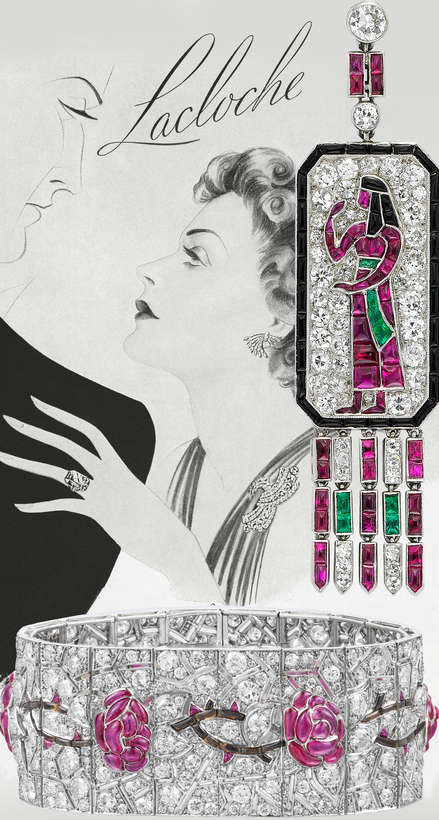During the Jazz Age, the Parisian jeweler Maison Lacloche dazzled on both sides of the Atlantic. Established in 1901 on the Rue de la Paix, this family business rapidly became Cartier’s biggest competitor, and probably the most celebrated jewelry house you’ve never heard of. For 70 dazzling years, its clients included the likes of King Edward VII, the Spanish royal family, and Hollywood stars such as Grace Kelly. “Bendor,” the Duke of Westminster, commissioned Lacloche to create a magnificent diamond halo tiara, which included two historic Arcot diamonds, to frame the sad face of his third wife, Loelia Ponsonby—solace, one speculates, for his continued dalliances with other women.
It was all the rage for women to snap open a Lacloche necessaire—enamel and gold Japonisme—to smoke or apply makeup in public. L’École, School of Jewelry Arts, in Paris, is hosting an exciting retrospective that brings the refined craftsmanship of this spectacular house back into the spotlight. Curated by Laurence Mouillefarine, “The Belle Époque of the Maison Lacloche” runs until mid-December.
For 70 dazzling years, Lacloche’s clients included the likes of King Edward VII and Grace Kelly.
Lacloche followed current fashions and shared workshops with other French maisons, but its work was distinguished by a unique sense of poetry and delicacy. Never showy, these jewelers created subtle masterpieces. Case in point: the diamond and platinum bracelet, circa 1915, that hovers like a diaphanous ribbon of petit-point lace roses. Another bracelet features a willowy drawing of a gentle Japanese scene, including a pagoda and junk, traced in obsidian, emeralds, and rubies across a diamond strap. Along with beauties such as these, exhibition highlights include surviving gouache design books and, following a lengthy treasure hunt by Mouillefarine, the original jewels displayed during the legendary 1925 Exposition Internationale des Arts Décoratifs et Industriels Modernes, from which Art Deco took its name.
During the 1960s, in spite of continued success, Jacques Lacloche became increasingly passionate about contemporary art and design. He opened a new gallery on the Rue de Grenelle and from there focused his visionary ideas on the production of aluminum-cast furniture and staircase designs, finally closing the jewelry store in 1967. Because the business wasn’t sold and reinvigorated as a modern brand, it has been largely forgotten (except among jewelry experts and the cognoscenti). But every so often a “name” that has languished in obscurity becomes the hot ticket, and that time has come for Lacloche. At auction, its pieces can carry weighty estimates; look for the signatures of Lacloche Frères or Jacques Lacloche on jewels, clocks, and vanity cases. After gazing at the treasures in this exhibition, you’ll understand why they’re worth the price. —Carol Woolton
